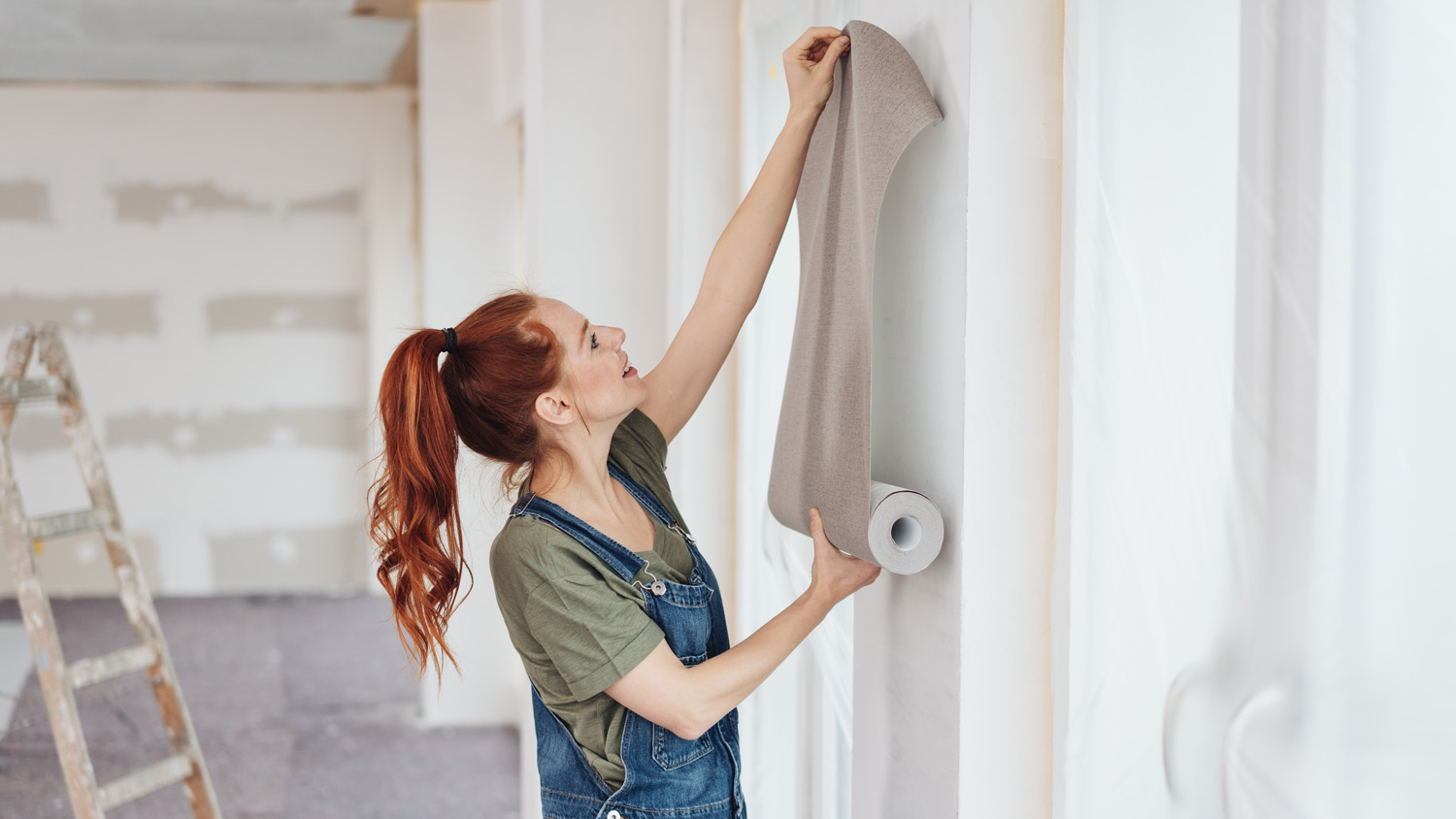
Discover wallpaper installation cost. Learn about material, labor, and project factors to estimate your budget and make informed choices for your home.
Here’s how to add a design flair without the risk of water damage


It is possible to wallpaper a bathroom as long as you use a water-resistant variety.
Repair existing wall damage and opt for heavy-duty glue for the best installation results.
Limit contact between wallpaper and water when cleaning and bathing.
We’ve all seen those bathrooms carefully decorated with elaborate wallpaper, and we’ve all wondered the same thing: Can you put wallpaper in a bathroom without it becoming a hot, peeling mess?
The good news is that you can indeed put wallpaper in your bathroom—but not without a few protective preliminary steps. It’s important to choose the right wallpaper and know how to prep your bathroom beforehand. With a little know-how—and waterproof glue—you can have your beautifully wallpapered bathroom and actually enjoy it, too
Between the risks of peeling, water damage, and mold, wallpapering a bathroom is a hard sell to many. However, the truth is that it’s totally doable—provided you use water-resistant wallpaper. Additionally, there are ways to limit the risks of water damage in spaces like this, from improving your ventilation system to being more deliberate about where the wallpaper is applied, like away from the sink or shower rather than right next to it.
You should avoid using traditional wallpaper, especially peel-and-stick varieties, because they lack protective measures to defend against steam and splashing. Instead, the best types of wallpaper for bathrooms include vinyl and fabric-backed vinyl wallpaper because they naturally repel moisture and are less likely to let steam seep into the space between the paper and the wall, the most common reason wallpaper peels in bathrooms. A local wallpaper installation pro can help you choose the perfect wallpaper for your space.
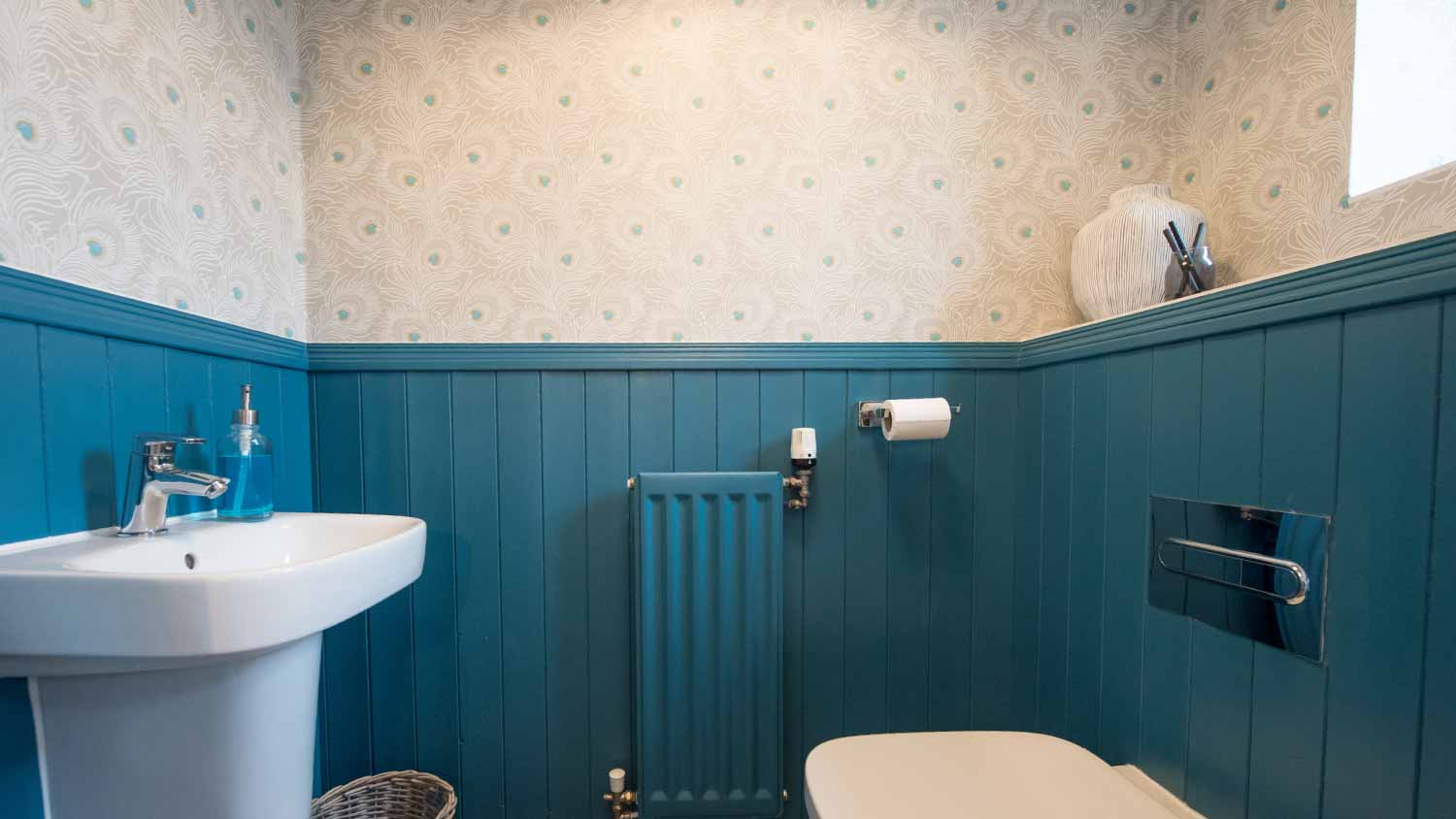
It’s not enough to pick the right kind of wallpaper—you also need to take a few additional protective measures to prevent peeling and water damage in the long run.
If there are a few tiny holes, dents, scratches, or chips on your bathroom walls and you were hoping to gloss over them, don’t. Though they’re small, they can damage your wallpaper in a big way, because these openings make it easier for steam to get behind the wallpaper and cause it to crack and peel over time.
Avoid placing wallpaper near water sources at all costs. Instead of letting it bump up right next to your tub, shower, or sink, you should aim to leave an inch or two of space or put a border between them, whether that be a new splashback or additional trim. Maybe it’s finally time for a bathroom remodel, or perhaps you’re better off investing in a dehumidifier to limit moisture levels during installation and afterwards.
While easy-to-remove wallpaper glue is ideal for other rooms—or if you’re renting and don’t want to lose a security deposit—opt for a heavy-duty clear paste option when it comes to the bathroom. Vinyl-over-vinyl adhesives are another solid choice because they’re naturally water resistant and won’t degrade from exposure to steam or contact with water.
Steam is enemy number one against the longevity of wallpaper in bathrooms, so it’s important to make sure your ventilation is up to the task of limiting its presence in these spaces. Evaluate your current bathroom HVAC system and whether it’s living up to its full potential, and consider if it’s time for a new exhaust fan before installing new wallpaper.
Hot showers are great, but they shouldn’t be too hot all the time—especially if there’s wallpaper in your bathroom. Lowering the temperature of your water heater is an easy way to ensure you’re less likely to go overboard on accident. Similarly, keep in mind that there’s a best temperature to install wallpaper at, and definitely avoid doing it if you’ve used the shower or bath recently.
Once the paper is up, here are a few ways to keep it that way.
Even if you’ve selected a water-resistant wallpaper, err on the side of caution and use as little moisture as possible when cleaning. Try to remove spots or marks with a dry cloth and use a lightly damp sponge and a bit of dish soap only when absolutely necessary. Even washable wallpaper should only be treated with light amounts of water.
In the event of a leak that does irreparable damage to your wallpaper, it’s a good idea to have extra on hand. That way, you can make repairs without additional costs or the fear that you won’t be able to replace it because the style is out of stock.
In addition to a dehumidifier and a well-performing exhaust fan, air out your bathroom after use, like opening the door or leaving the window cracked until all the steam has aired out.
From average costs to expert advice, get all the answers you need to get your job done.

Discover wallpaper installation cost. Learn about material, labor, and project factors to estimate your budget and make informed choices for your home.
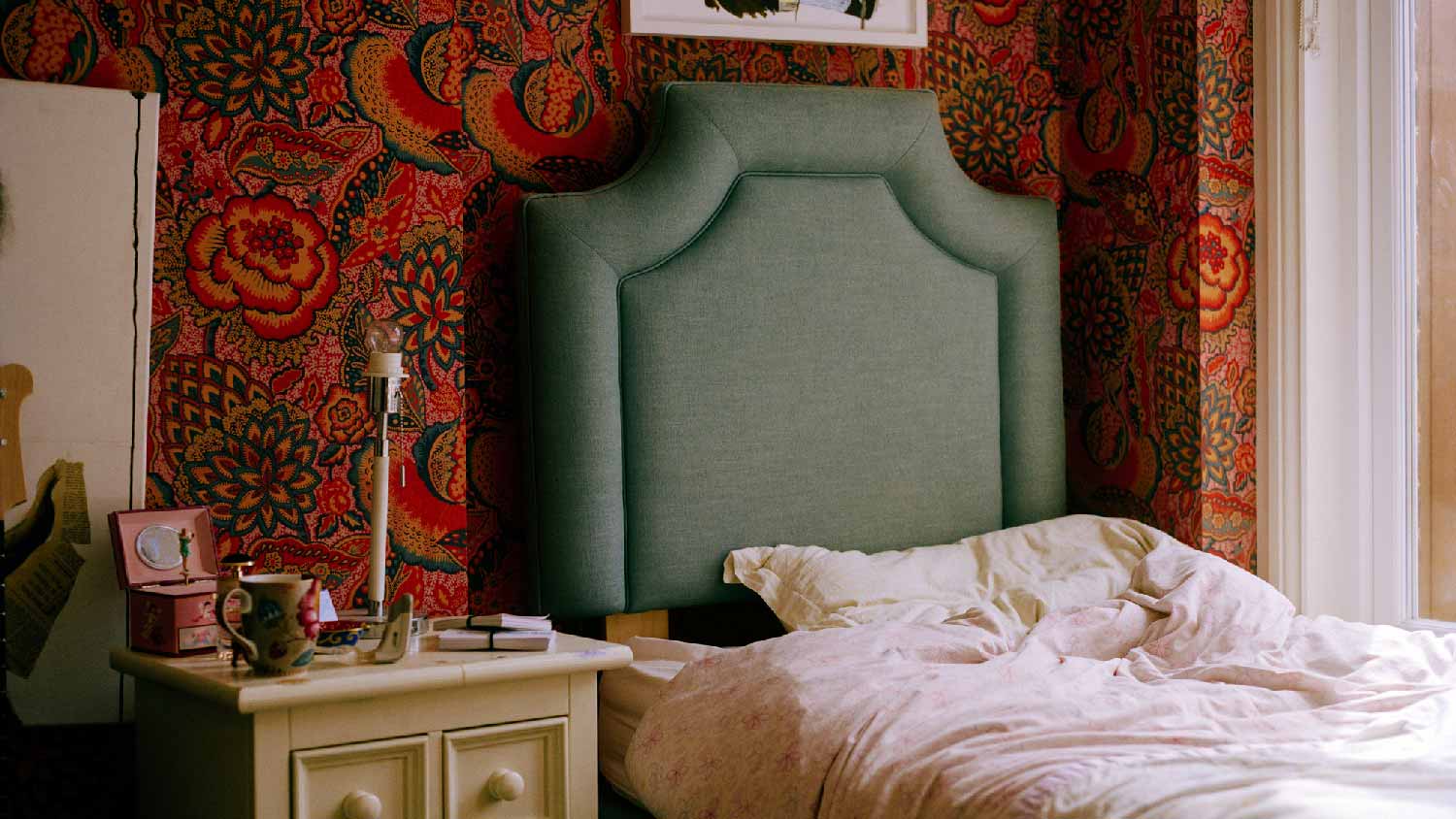
Planning to revamp your living space? Check out the best types of wallpaper, plus pros and cons to consider before choosing the best option for your home.
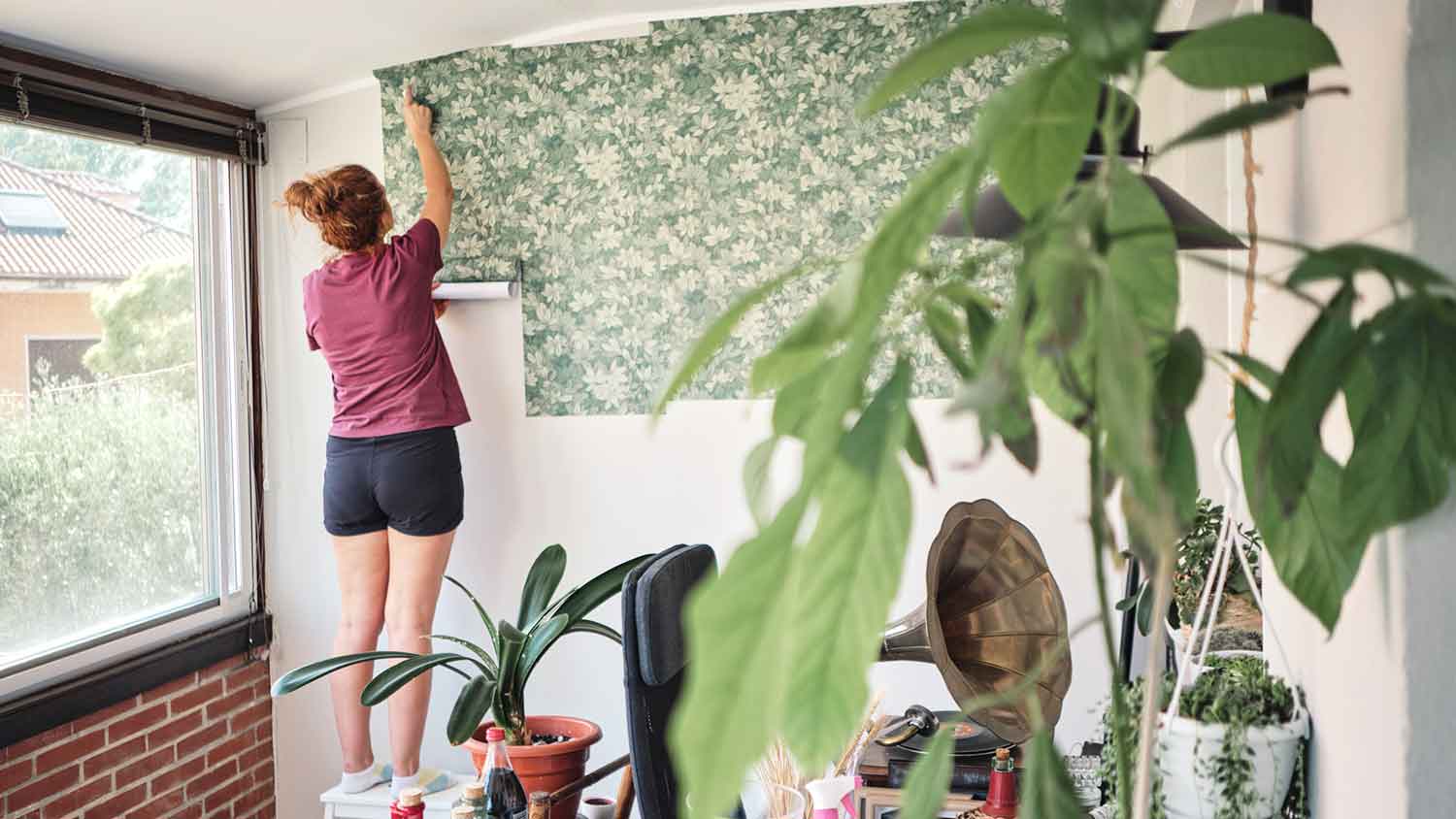
Is peel-and-stick wallpaper removable? Find out how to remove temporary wallpaper without causing damage to your walls.
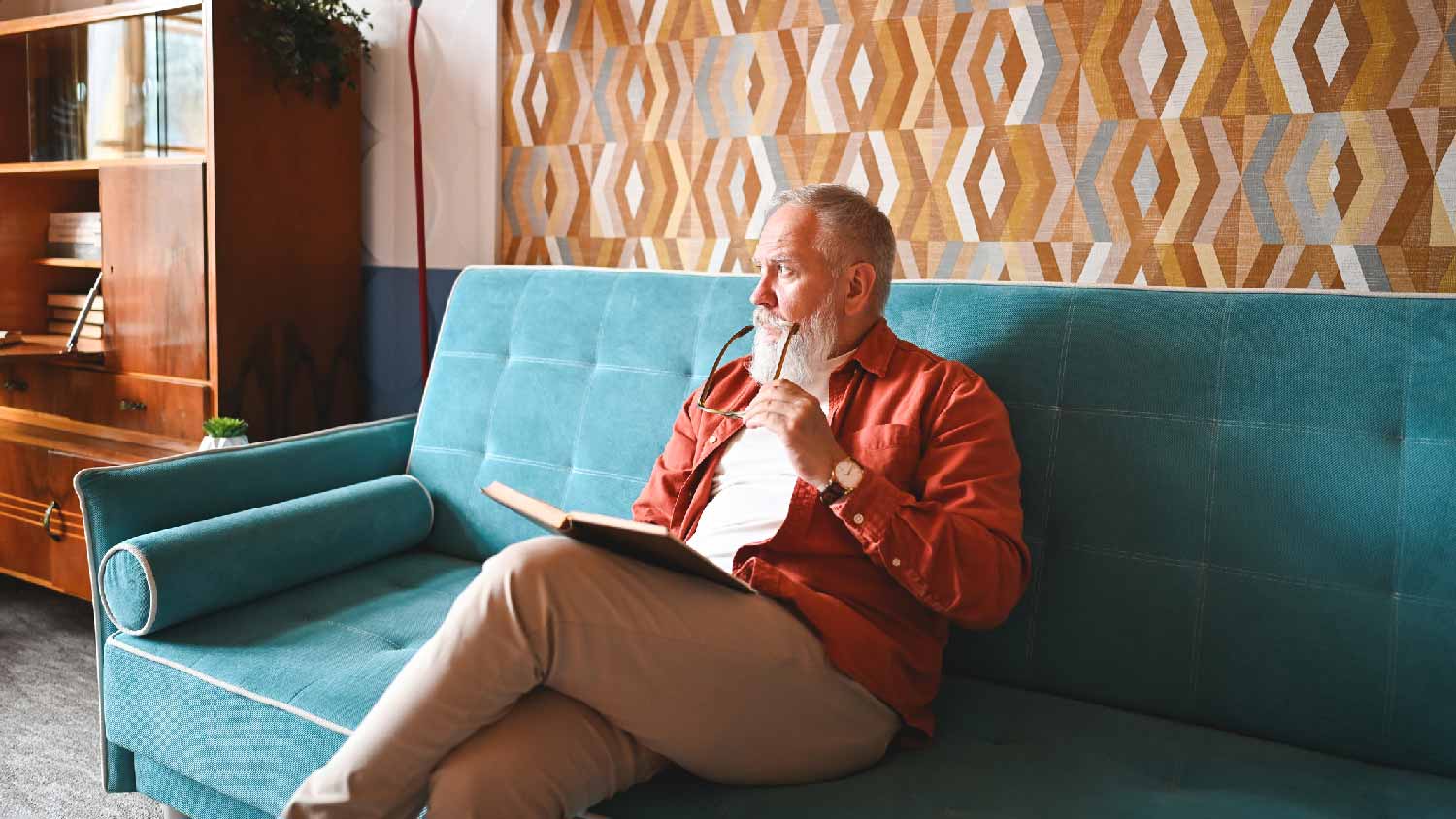
After ripping out old wallpaper, you may be left wondering, “How do I remove wallpaper paste from the walls?” Here’s how to get rid of old wallpaper glue.
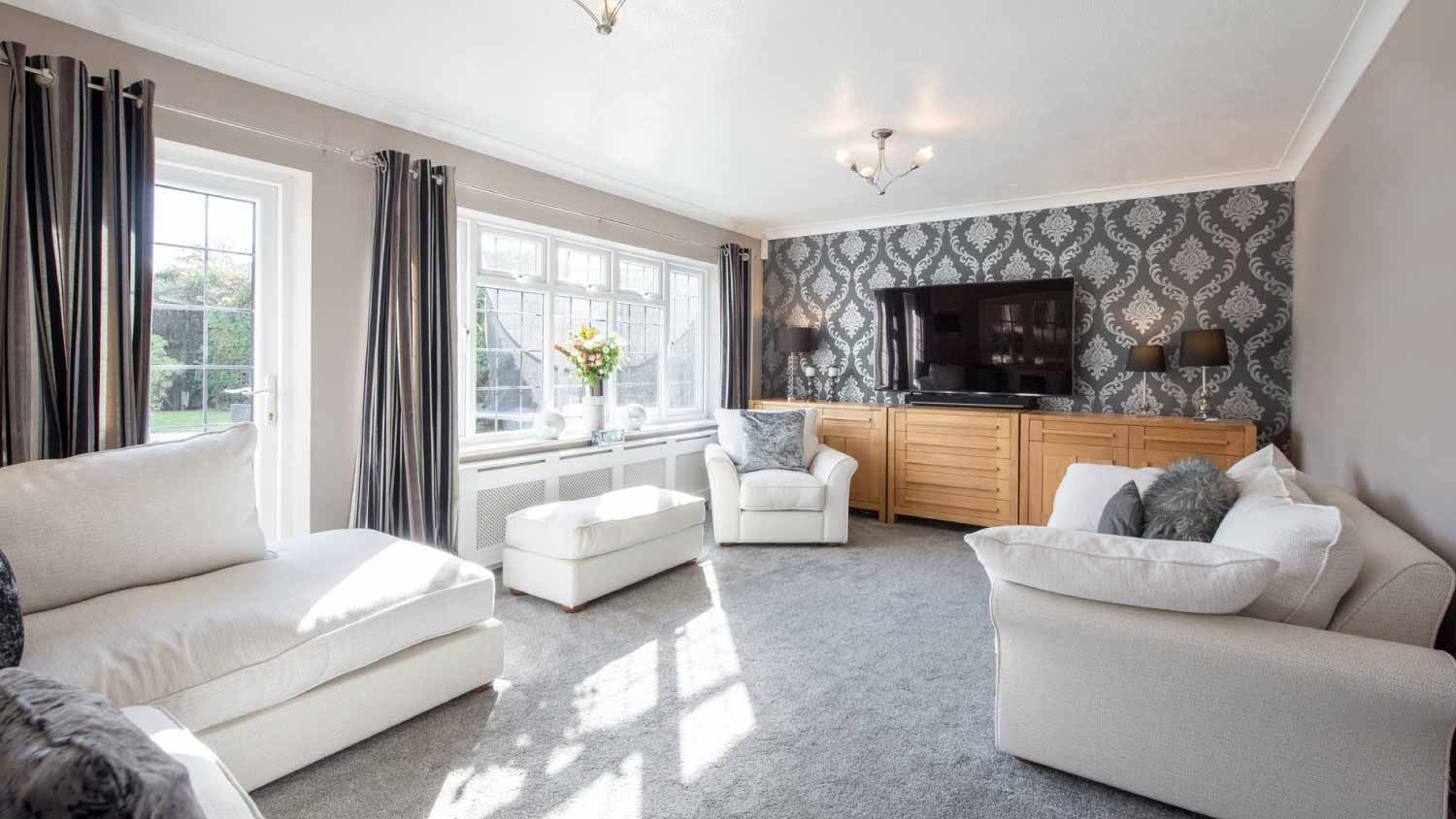
Learning how to install peel-and-stick wallpaper doesn’t have to be a hassle. Figure out which steps you need to take to have a successful DIY installation.
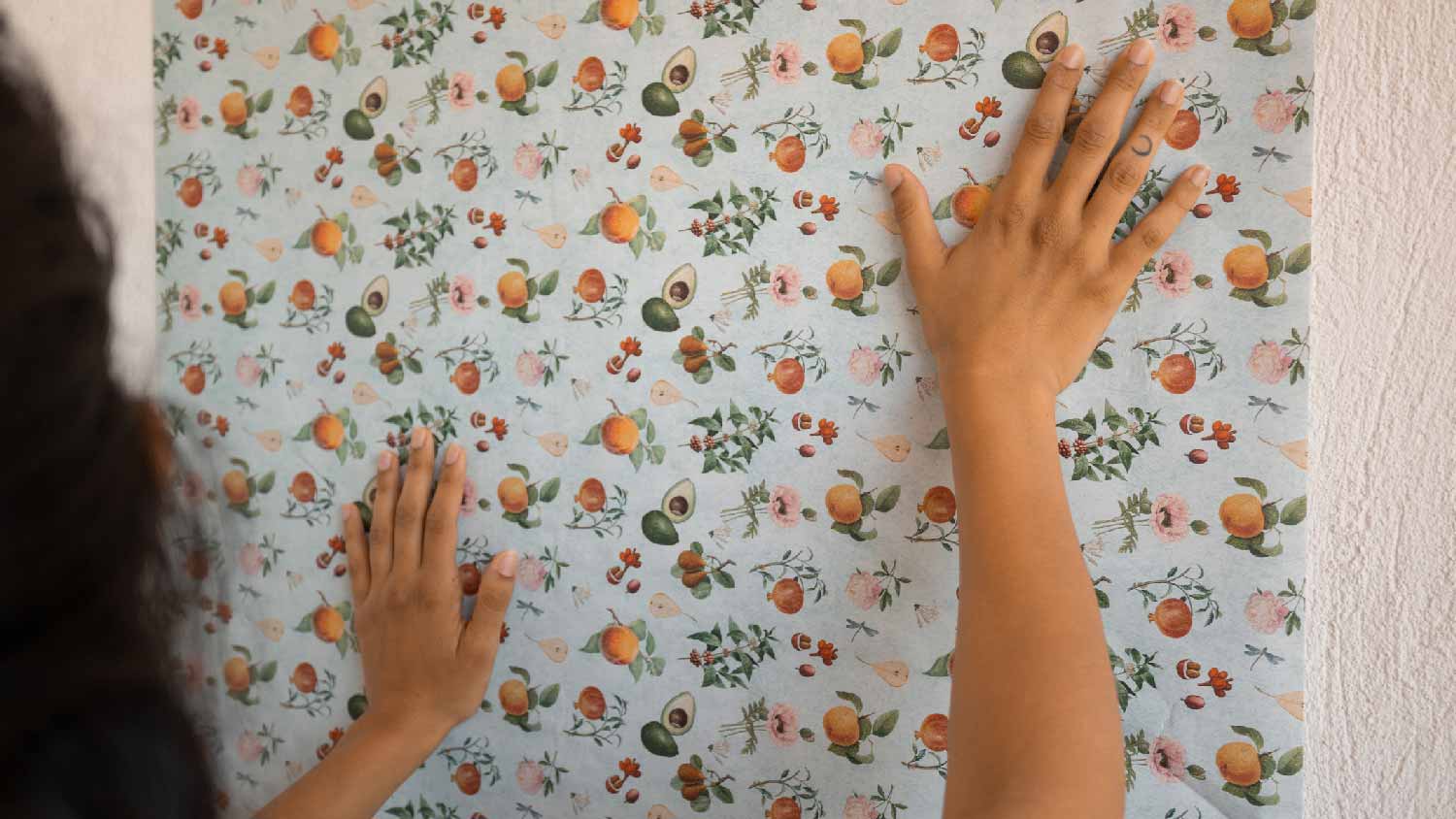
Can you put wallpaper on textured walls? You can, but you might not want to. If you do, here are some tips to stack the odds in your favor.